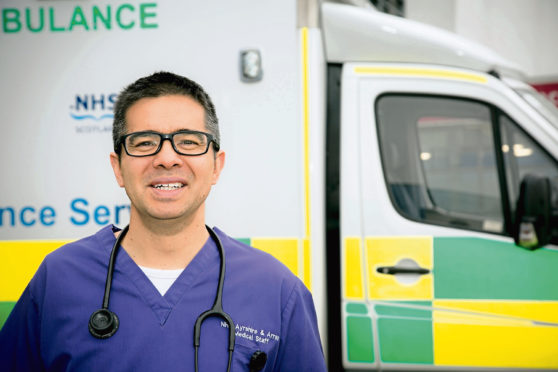
Scots A&E doctors have called on ministers to maintain the four-hour target for waiting times as colleagues in England push for it to be scrapped.
Proposals to change the benchmark in England were backed by professional body The Royal College of Emergency Medicine (RCEM) last week.
But Scottish casualty doctors have not backed the call and it is understood president of the college in Scotland, Dr David Chung has written to Health Secretary Jeane Freeman about the issue.
The RCEM is an independent professional association for emergency doctors across the UK but each devolved nation also has a separate health system.
In a statement last week, the RCEM said: “Now is the time to bite the bullet and change the way we measure emergency care. We need to try a new performance framework unencumbered by the four-hour standard if we are to improve care for our patients.”
Health secretary Matt Hancock and NHS England officials believe the target to treat, admit or discharge 95% of patients within four hours of arrival at A&E is no longer clinically appropriate and they have been piloting plans to replace it. England’s NHS last met the target in July 2015.
The Scottish Government said there are no plans to scrap the target despite the NHS here failing to hit it for almost three years. In recent weeks around 95% of people have been seen within four hours, possibly because fewer people are going to A&E over fears about catching coronavirus.
Dr Chung warned in May that Scotland’s A&E departments will have to change the way it treats patients as a result of the pandemic. He said: “From an infection control point of view we definitely can’t go back to the days where we are seeing, on a bad week in Scotland, 1,000 people waiting on a trolley in a corridor for a bed.”
Gordon Miles, chief executive of The Royal College of Emergency Medicine, said Scottish doctors had been involved in council meetings when the call to scrap targets in England was discussed. He said: “I’m not going to talk about our internal decision-making processes but we have discussed it many times.”
In a statement, he added: “The college has no issues with different approaches being taken in the devolved nations of the UK.”

Enjoy the convenience of having The Sunday Post delivered as a digital ePaper straight to your smartphone, tablet or computer.
Subscribe for only £5.49 a month and enjoy all the benefits of the printed paper as a digital replica.
Subscribe